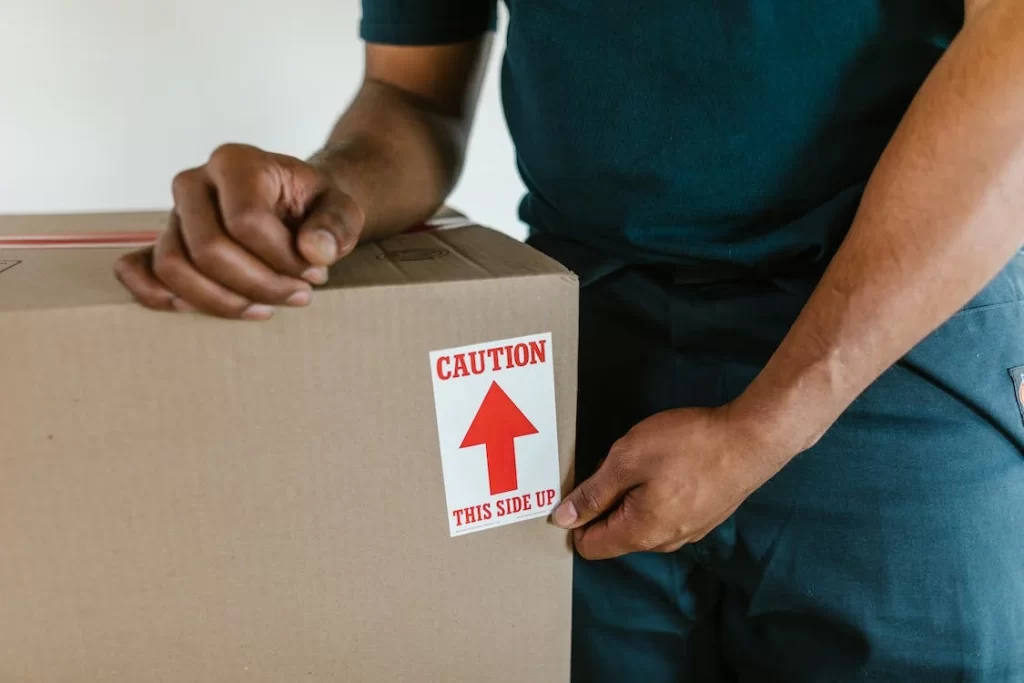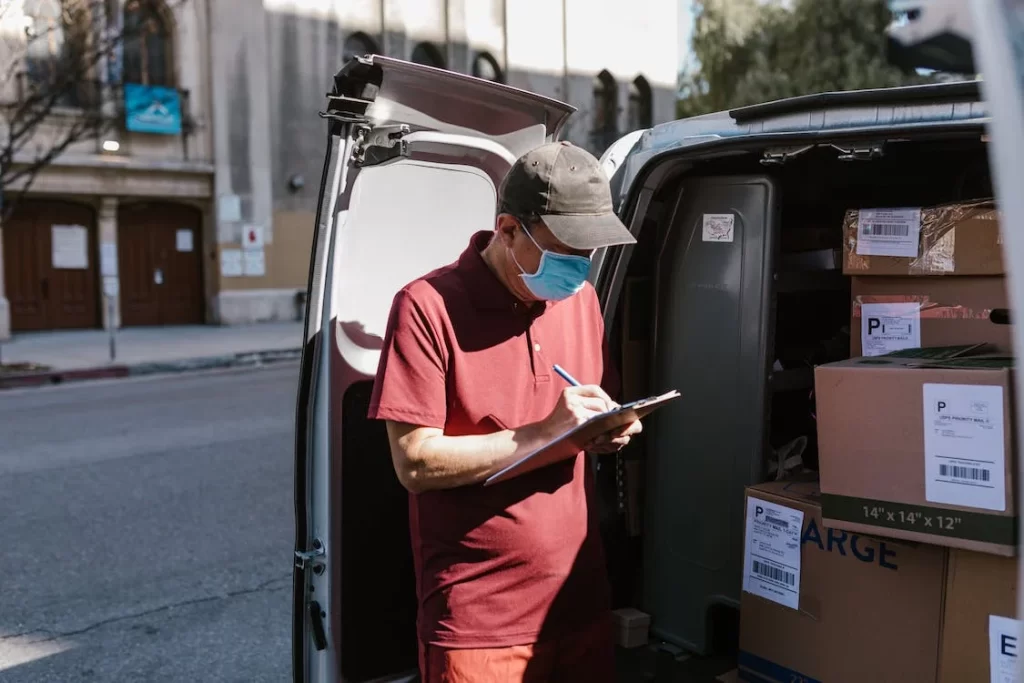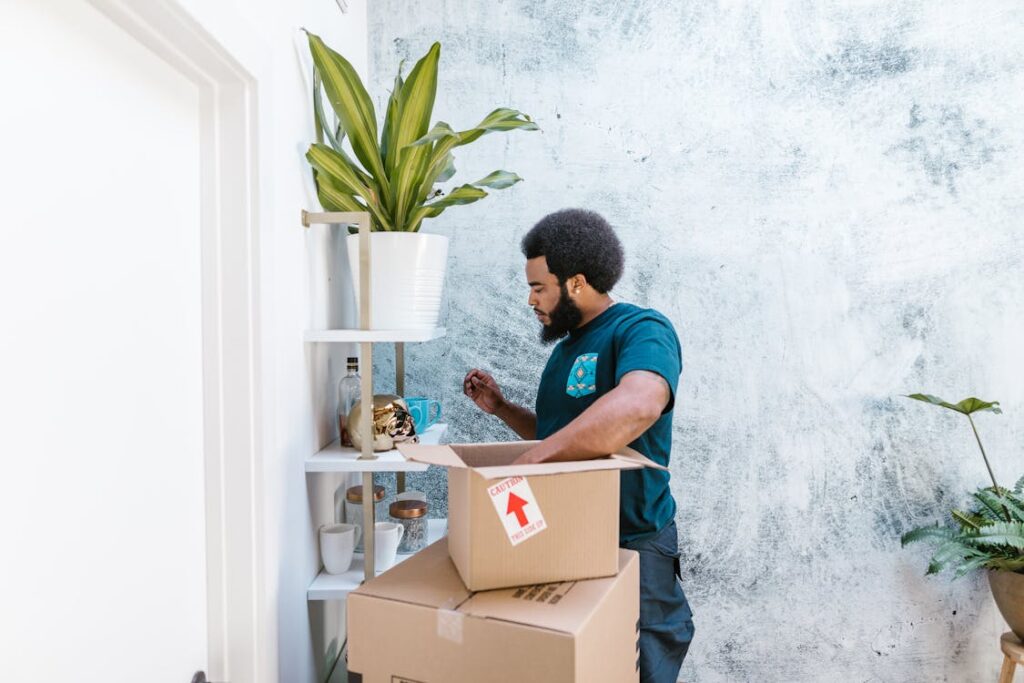Table of Contents
Moving can be a daunting task, and one of the biggest decisions you’ll face is whether to DIY move or hire professional movers. Each option has its own set of benefits and drawbacks, and the choice you make can significantly impact your moving experience. In this blog, we will provide a comprehensive comparison of DIY moving and hiring professional movers, helping you make an informed decision. We’ll cover everything from cost comparisons to safety considerations, and share tips to ensure a stress-free move.
When planning a move, the decision to opt for a DIY move or to hire professional moving services can be challenging. This decision often depends on factors such as your budget, the complexity of your move, and personal preferences. Both options come with their own set of advantages and disadvantages, and understanding these can help you choose the best approach for your situation.

Cost Comparison: DIY vs. Professional Movers
DIY Moving Costs
One of the primary reasons people consider a DIY move is the potential cost savings. However, it’s important to account for all expenses involved. Truck rental costs can vary depending on the size of the truck and the distance of the move. For a local move, you might spend between $20 to $40 per day for a small truck, while a larger truck could cost $50 to $70 per day. For long-distance moves, expect to pay several hundred dollars.
Fuel is another significant expense. Moving trucks often have lower fuel efficiency, which means more frequent fill-ups. Depending on the distance, fuel costs can add up quickly.
Moving supplies such as boxes, packing tape, bubble wrap, and other materials can also be surprisingly costly. You might spend $100 to $300 on these supplies, depending on the size of your home.
Insurance is an often overlooked cost. Basic coverage may not be sufficient, especially if you’re moving valuable items. Additional insurance can add to the total cost, potentially costing $50 to $200 depending on the value of your belongings.
Finally, while you save on hiring movers, you might need to recruit friends or family to help, which could mean providing meals or compensation. Additionally, the potential for injury and damage to belongings adds a hidden cost in terms of time, stress, and possible medical or repair expenses.
Professional Moving Costs
Hiring professional movers may appear more expensive upfront, but it can include several services that add value. Full-service moving typically includes packing, loading, transporting, unloading, and unpacking. This comprehensive service can save you a significant amount of time and effort. For a local move, the cost of hiring professional movers can range from $500 to $1,500, while long-distance moves might cost between $2,000 and $5,000 or more, depending on the distance and volume of your belongings.
Insurance provided by professional movers often offers more comprehensive coverage, protecting your belongings against damage or loss during the move. The cost of this insurance is typically included in the moving package, though additional coverage can be purchased if needed.
Professional movers also come equipped with special equipment needed to handle heavy or fragile items safely, such as dollies, moving blankets, and straps. This not only protects your belongings but also reduces the risk of injury.
Time savings is another significant factor. Professional movers can complete the move more quickly and efficiently than a DIY move, allowing you to settle into your new home sooner.
Hidden Costs
Both options have hidden costs that should be considered. For a DIY move, the potential for injury, damage to belongings, and time off work can add to the overall expense. Professional movers may charge additional fees for extra services, long carries, or bulky items. Understanding these potential costs upfront can help you budget more accurately and avoid surprises.
Pros and Cons of DIY Moving
Pros of DIY Moving
Cost Savings is the primary advantage of a DIY move. By handling the packing, loading, and transportation yourself, you can potentially save a significant amount of money. If you already have access to a vehicle and moving supplies, the savings can be even greater.
Control is another benefit. You have complete control over the packing and moving process, ensuring everything is handled exactly as you want. You can pack items according to your preferences, take breaks as needed, and move at your own pace.
Flexibility is a significant advantage as well. You can move on your own schedule without being tied to a moving company’s availability. This can be particularly beneficial if you have a complex or unpredictable moving timeline.
Cons of DIY Moving
Physical Strain is a major drawback. Moving heavy furniture and boxes can be physically demanding and increase the risk of injury. Without the proper equipment and techniques, you might strain your back, knees, or other parts of your body.
Time-Consuming is another disadvantage. Packing and moving can take significantly longer without professional help. What might take professional movers a day or two could take you several days or even weeks, depending on your schedule and resources.
Risk of Damage is higher with a DIY move. Without professional packing and handling, there’s a higher risk of damaging your belongings. Improper packing techniques can lead to broken or damaged items, and improper loading can result in shifting and damage during transport.

Pros and Cons of Hiring Professional Movers
Pros of Hiring Professional Movers
Efficiency is a key advantage of hiring professional movers. They are experienced and can complete the move quickly and efficiently. Their expertise allows them to pack and load items in a way that maximizes space and minimizes damage.
Safety is another significant benefit. Professional movers are trained to handle heavy and fragile items safely, reducing the risk of injury and damage. They have the right equipment and techniques to move items without causing harm to themselves or your belongings.
Convenience is a major selling point. Full-service options mean you can focus on other aspects of your move while professionals handle the logistics. This can be particularly beneficial if you have a busy schedule or if you’re moving long-distance.
Cons of Hiring Professional Movers
Cost is the primary disadvantage. Professional moving services can be expensive, especially for long-distance moves. While the convenience and efficiency might justify the cost for some, it can be a significant financial burden for others.
Lack of Control is another drawback. You may have less control over how your belongings are packed and handled. This can be concerning if you have valuable or sentimental items that you want to ensure are treated with extra care.
Scheduling can also be an issue. You need to work within the moving company’s availability, which might not always align with your preferred timeline. This can be particularly challenging during peak moving seasons.
DIY Moving Tips for a Successful Move
If you decide to go the DIY moving route, here are some tips to ensure a successful move:
Plan Ahead
Create a Timeline: Start planning your move as early as possible. Create a timeline with key milestones to stay on track. Break down the tasks into manageable steps and set deadlines for each task.
Inventory: Make a detailed inventory of your belongings to keep track of everything and ensure nothing is left behind. This inventory will also be helpful if you need to file an insurance claim for any lost or damaged items.
Gather Supplies
Boxes: Collect sturdy boxes in various sizes. Consider purchasing specialty boxes for items like dishes and wardrobe. You can often find free boxes at grocery stores or online marketplaces, but make sure they are in good condition.
Packing Materials: Stock up on packing tape, bubble wrap, and packing paper. These materials will protect your belongings and help you pack efficiently. Use bubble wrap and packing paper to wrap fragile items and fill empty spaces in boxes to prevent shifting.
Labels: Clearly label each box with its contents and destination room to make unpacking easier. Use color-coded labels or markers to easily identify which boxes belong in which rooms.
Packing Tips
Declutter: Before packing, declutter your home and donate or sell items you no longer need. This will reduce the number of items you need to move and make packing easier.
Pack Smart: Pack heavier items at the bottom of boxes and lighter items on top. Use smaller boxes for heavier items to make them easier to carry. Avoid overpacking boxes, as this can make them too heavy and increase the risk of breaking.
Protect Fragile Items: Use plenty of padding for fragile items and mark these boxes as “fragile” for careful handling. Wrap fragile items individually in bubble wrap or packing paper and use padding to fill any empty spaces in the box.
Loading the Truck
Distribute Weight Evenly: Place heavier items at the bottom and towards the front of the truck to distribute weight evenly. This will help prevent the truck from becoming unbalanced and reduce the risk of items shifting during transport.
Secure Items: Use straps and ropes to secure items in place and prevent shifting during transit. This will help keep your belongings safe and prevent damage.
Maximize Space: Utilize the truck space efficiently by stacking boxes and furniture securely. Disassemble large furniture items, if possible, to save space and make them easier to load.

How to Choose the Right Moving Company
If you decide to hire professional movers, selecting the right company is crucial for a smooth move. Here’s how to choose the best moving company for your needs:
Research
Get Recommendations: Ask friends, family, and colleagues for recommendations of reputable moving companies. Personal recommendations can provide valuable insights into the quality of service and reliability of the company.
Online Reviews: Check online reviews and ratings to gauge the company’s reputation and customer satisfaction. Look for consistent positive feedback and pay attention to how the company responds to negative reviews.
Obtain Quotes
Multiple Quotes: Get quotes from at least three different moving companies to compare prices and services. This will give you a better understanding of the market rates and help you find the best deal.
Detailed Estimates: Ensure the quotes include a detailed breakdown of all charges to avoid hidden fees. Ask for a written estimate that outlines all the services included and any additional fees that might apply.
Verify Credentials
Licensing and Insurance: Verify that the moving company is licensed and insured. Check with the Federal Motor Carrier Safety Administration (FMCSA) for interstate moves. A licensed and insured company is more likely to be reliable and provide quality service.
Experience: Look for a company with several years of experience and a proven track record of successful moves. Experienced movers are more likely to handle your belongings with care and complete the move efficiently.
Ask Questions
Services Offered: Inquire about the services offered, including packing, storage, and specialty item handling. Make sure the company can meet your specific needs and requirements.
Cancellation Policy: Understand the company’s cancellation policy and any associated fees. This will help you avoid unexpected costs if you need to change your moving plans.
References: Ask for references from past customers to get firsthand feedback on their experiences. Contact these references to learn more about the company’s reliability, professionalism, and customer service.
Safety Considerations in Moving
Whether you choose to DIY or hire professionals, safety considerations are paramount during a move. Here are some key safety tips to keep in mind:
Personal Safety
Proper Lifting Techniques: Use your legs, not your back, to lift heavy items. Keep your back straight and avoid twisting while lifting. If an item is too heavy or awkward to lift alone, ask for help or use a dolly.
Wear Appropriate Clothing: Wear comfortable, closed-toe shoes with good grip to prevent slips and falls. Avoid loose clothing that could get caught on objects, and wear gloves to protect your hands.
Stay Hydrated: Moving can be physically demanding, so stay hydrated and take regular breaks. Drink plenty of water and have snacks on hand to maintain your energy levels.
Protecting Belongings
Securely Pack Fragile Items: Use ample padding and sturdy boxes for fragile items to prevent damage. Label these boxes as “fragile” and ensure they are loaded carefully.
Avoid Overpacking: Don’t overpack boxes to avoid them becoming too heavy and breaking. Use smaller boxes for heavier items and larger boxes for lighter items to make them easier to carry.
Label Hazardous Items: Clearly label boxes containing hazardous materials and ensure they are packed safely. Follow all local regulations for transporting hazardous materials and keep these items separate from other belongings.
Truck Safety
Inspect the Truck: Before driving, inspect the moving truck for any mechanical issues and ensure it is properly maintained. Check the tire pressure, fluid levels, and lights to ensure the truck is safe to drive.
Drive Carefully: Drive at a safe speed, especially when carrying a heavy load. Allow extra stopping distance and be cautious of height restrictions. Use a spotter when reversing or maneuvering in tight spaces to avoid accidents.

Stress-Free Moving: How to Achieve It
Moving is often cited as one of the most stressful life events, but it doesn’t have to be. Here are some tips to achieve a stress-free move:
Start Early
Plan in Advance: Begin planning your move as early as possible to avoid last-minute stress. Create a detailed moving plan that outlines all the tasks you need to complete and set deadlines for each task.
Create a Checklist: Make a comprehensive moving checklist to keep track of tasks and deadlines. This will help you stay organized and ensure you don’t forget anything important.
Stay Organized
Keep Important Documents Handy: Keep essential documents, such as contracts, receipts, and inventory lists, in a designated folder. This will make it easy to access these documents when needed and prevent them from getting lost.
Pack an Essentials Box: Pack a box with essential items you’ll need immediately upon arrival, such as toiletries, a change of clothes, and basic kitchen supplies. This will help you avoid rummaging through boxes to find these items on your first day in your new home.
Delegate Tasks
Involve Family and Friends: Enlist the help of family and friends to share the workload and make the process more manageable. Assign specific tasks to each person to ensure everything gets done efficiently.
Hire Professionals: If your budget allows, hire professional movers to handle the heavy lifting and logistics. This can significantly reduce the stress and physical strain of moving.
Take Care of Yourself
Rest and Relax: Ensure you get enough rest and take time to relax amidst the moving chaos. Moving can be physically and mentally exhausting, so it’s important to take breaks and recharge.
Stay Positive: Keep a positive mindset and focus on the exciting aspects of your move, such as settling into a new home and exploring a new area. Remind yourself that the stress is temporary and the end result will be worth it.
Conclusion
Deciding between a DIY move and hiring professional movers depends on your unique circumstances, including your budget, the complexity of your move, and your personal preferences. Both options have their advantages and disadvantages, and by understanding these, you can make an informed decision that best suits your needs. Whether you choose to take on the challenge of a DIY move or opt for the convenience of professional movers, proper planning and preparation are key to a successful and stress-free moving experience.
Make Your Move with 680 Movers
Ready to make your move? Whether you choose to DIY or hire professionals, 680 Movers is here to assist you every step of the way. Our team of experienced movers provides top-notch professional moving services to ensure a smooth and efficient move. Contact us today for a free quote and let us help you make your next move the best one yet!
By following this comprehensive guide, you’ll be well-equipped to make the right decision for your move. Remember, whether you choose to DIY or hire professionals, the key to a successful move lies in careful planning, organization, and a positive mindset. Happy moving!